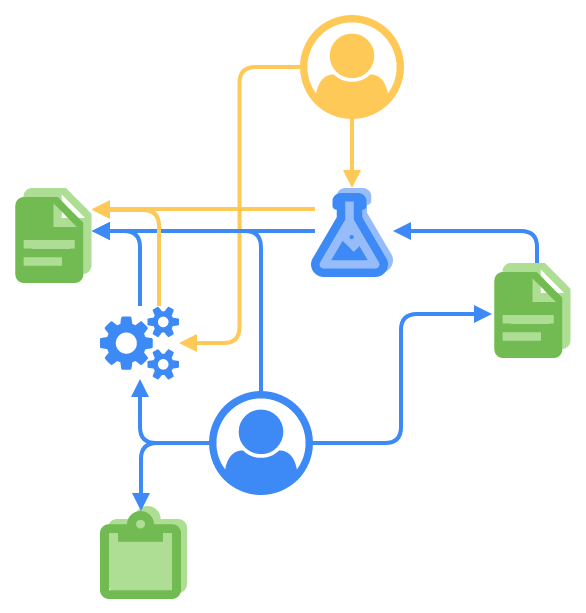Whether you’re selecting your first ELN/LIMS or evaluating the effectiveness of your current digital solution, you need to verify that it meets the United States Code of Federal Regulations (CFR) Part 11 as it applies to a pharmaceutical lab that produces and utilizes electronic documents and signatures. Since 1997, Part 11 of Title 21 of the Code, has been the primary authority governing the standard of practice for electronic records. Pharmaceutical laboratories that plan on adopting digital solutions for documentation should ensure that the ELN or LIMS solution they are selecting is one that is FDA 21 CFR part 11 compliant.
In this article, we explain several key provisions of FDA 21 CFR Part 11 and answer commonly-asked questions.
21 CFR Part 11 is meant to ensure that electronic records and signatures are as accurate and trustworthy as paper documents.
The operational purposes of 21 CFR Part 11 focus, first, on granting access to documents only to authorized individuals who are properly identified and who meet access requirements. The second purpose of 21 CFR Part 11 is to safeguard data integrity by creating strong security measures that include strict password, login, and electronic signature protocols as well as a clear audit trail that monitors all changes to a record and enhances a lab’s ability to catch errors or detect unauthorized access to any document.
There are a few exceptions, but generally, US companies that manufacture pharmaceuticals, food products, or medical devices must adhere to 21 CFR Part 11.
1. General provisions. This section lays out the overall scope of the regulation and explains the types of documents to which it pertains.
2. Electronic records.
3. Electronic signatures.
The SciCord Informatics platform features a spreadsheet-based hybrid ELN/LIMS that combines the compliance and structured aspects of a Laboratory Information Management System (LIMS) with the flexibility of an Electronic Laboratory Notebook (ELN). The ELN and LIMS functions integrate seamlessly and enable your company to quickly reap the benefits of enhanced data and time efficiencies as you continue to meet compliance standards and follow GLP.
SciCord utilizes the ALCOA+ model to ensure consistent data security and data integrity. The 9 components of the ALCOA+ model ensure that all captured data is Attributable, Legible, Contemporaneous, Original, Accurate, Complete, Consistent, Enduring, and Available.
The Attributable component of ALCOA+ is particularly relevant to 21 CFR Title 11 compliance. SciCord provides a comprehensive set of roles predefined with permissions. These permissions can be configured to suit your lab. You can also create custom roles as needed.
Records are easily traced to the person who collected the data, the place of origin, and the time of data collection. Unique electronic signatures identify individuals who create or modify the electronic records. An audit trail includes the author or modifier of the data, the timestamp of the original and modified data, and the location of the data within the system.

Complying with all the requirements of 21 CFR title 11 can be tedious unless you have a robust ELN or LIMS solution in place. The specifications regarding the safety and integrity of electronic records, including electronic signatures and an audit trail, can be onerous. SciCord Informatics platform meets all the 21 CFR Part 11 compliance requirements and provides a hybrid solution for data integrity and safety. By ensuring compliance with these regulations, laboratories can enhance their efficiency, accuracy, and security in managing electronic records and signatures.
Looking for other resources, press releases, articles, or documentation?
Reach out to Schedule a Meeting and get more information about how SciCord can fit into your lab
Don’t take our word for it.
We exceed our client’s demands everyday to make their research and discovery process simpler and more efficient.
This is by far the best value in science software (or anything else in science, really) that we’ve ever experienced. Other solutions in this price range had a fraction of the features, and those with the features cost 3x – 10x more. We’re very happy customers.

Josh Guyer,
Senior Pharmaceutical Scientist
Comments are closed.
Recent Comments